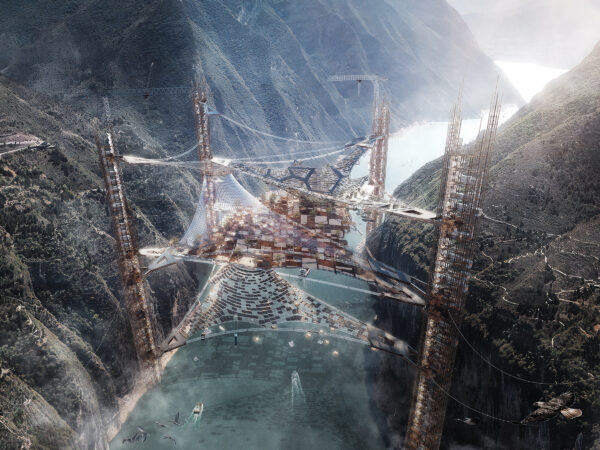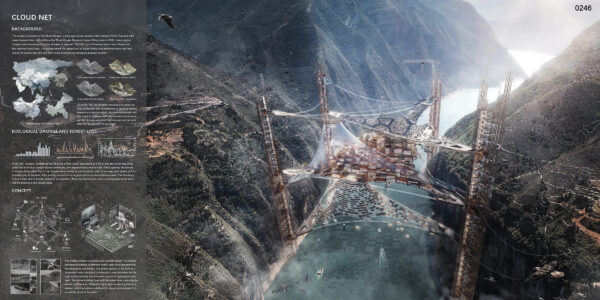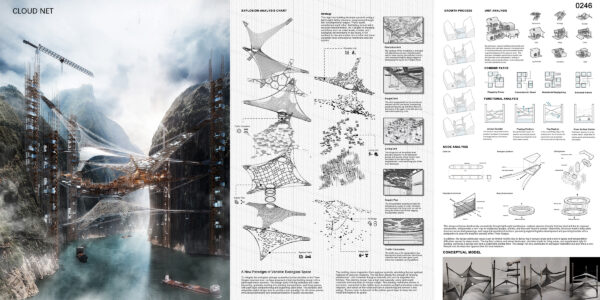2024 Skyscraper Competition
Honorable Mention
Zhengsheng Pu, Bingrui Liu, Jingxiang Hong, Yunqian Wang, Yujie Feng, Kehan Sun
China
The Three Gorges Hydro-power Station, as the world’s largest hydro-power project, has been controversial since its inception, mainly involving issues of resettlement and the environment. The project inundated 632 square kilometers of land, affecting the lives of 847,500 people and a large amount of farmland, houses, and roads. The construction of the dam altered the ecology of the river segment, causing serious impacts on biodiversity and leading to the extinction or reduction of certain species.
To mitigate the ecological damage caused by human activities in the Three Gorges reservoir area, we have proposed a high-rise building design with a lightweight mesh structure. This design starts with fog collection and water harvesting, gradually evolving into planting, transportation, and living spaces, with each layer complementing and supporting each other. This dynamic and adaptable spatial design aims to provide a new paradigm for old urban spaces, stimulating spontaneity and social participation in spatial construction.
The building draws inspiration from regional symbols, rebuilding the lost spiritual highland of reservoir residents. The top floor adopts the concept of “farming architecture,” with materials that grow naturally and can be degraded into fertilizer. The planting design has a high load capacity, using lightweight materials and substrates to reduce weight. The planting membrane comes in two forms: connected to the middle layer to absorb sunlight and collect water for irrigation; and raised on the windward side to absorb fog and convert it into energy. Excess water is directed to the bottom gravel layer to keep the soil moist and improve its quality.
This design enhances biodiversity connectivity through lightweight architecture, restores species diversity that has declined due to reservoir construction, and provides a new way for indigenous people, tourists, and flora and fauna to coexist. Meanwhile, the lower mesh’s liable plate structure serves both passenger and cargo transportation functions, promoting regional logistics development and providing tourists with a perspective to enjoy the beautiful scenery of the Three Gorges.
In addition, the design addresses issues such as limited visibility due to dense fog in canyon areas and a lack of space and transportation difficulties caused by steep terrain. The top floor collects and stores freshwater, provides shade for living areas, and supplements light for planting, achieving a sponge roof and a sustainable rooftop farm. This design not only contributes to ecological restoration but also offers a new lifestyle and development opportunities for local residents.

















